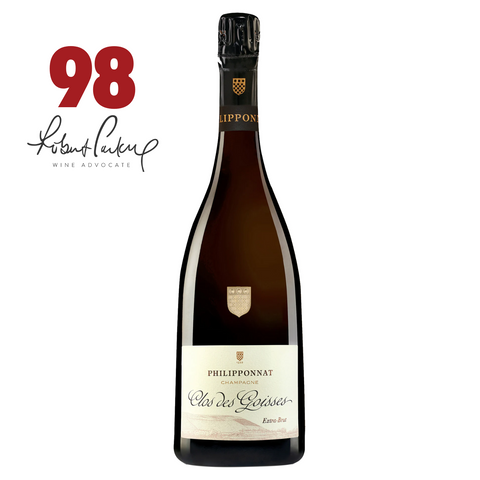Grape
85% Pinot Noir, 15% Chardonnay
Dosage
4.5g/L
Tasting notes
The 2013 Champagne Philipponnat Clos des Goisses is a highly regarded vintage, known for its brilliant color, fine effervescence, and refined floral nose. Aromas of redcurrant and red berries evolve beautifully into toasted and brioche-like notes, adding depth and complexity. On the palate, the wine is rich and mineral-driven, with vibrant flavors of blackberry and small red fruits, all carried by a precise, elegant structure. The finish is long, fresh, and impeccably balanced, showcasing both power and finesse. A Champagne of character and pedigree, it pairs sublimely with strong-flavored dishes and is best appreciated after decanting to reveal its full aromatic potential.
Expert ratings
Robert Parker 98 Points
“Surpassing even the 2012 and 2008, Philipponnat's 2013 Clos des Goisses looks to be the finest vintage of this cuvée in several decades, at least on first acquaintance. Deriving from only the six core parcels out of the 13 that make up the Clos des Goisses, it's a striking wine, evoking aromas of crisp yellow orchard fruit, Anjou pear, clear honey, bee pollen, stone fruit and iodine.
Full-bodied, layered and vinous, its textural attack segues into a deep, concentrated and tightly wound mid-palate that's girdled by racy acids and chalky structure, before concluding with a long, saline finish. Why is it quite so good? It would appear that 2013 was the perfect storm: an early-ripening terroir in a cool, late vintage; moderately yielding Burgundian selections of Pinot Noir and Chardonnay that attained full maturity; and a willingness to make a strict selection have all come together to deliver a profound Clos des Goisses.” William Kelley
Vinous 98 Points
“The 2013 Extra-Brut Clos des Goisses is fabulous... Its depth, textural resonance and finish are so evocative as to what the future holds. The 2013 is a positively stunning Champagne and one of the best Goisses in recent memory. I can't wait to see how it develops." Antonio Galloni

